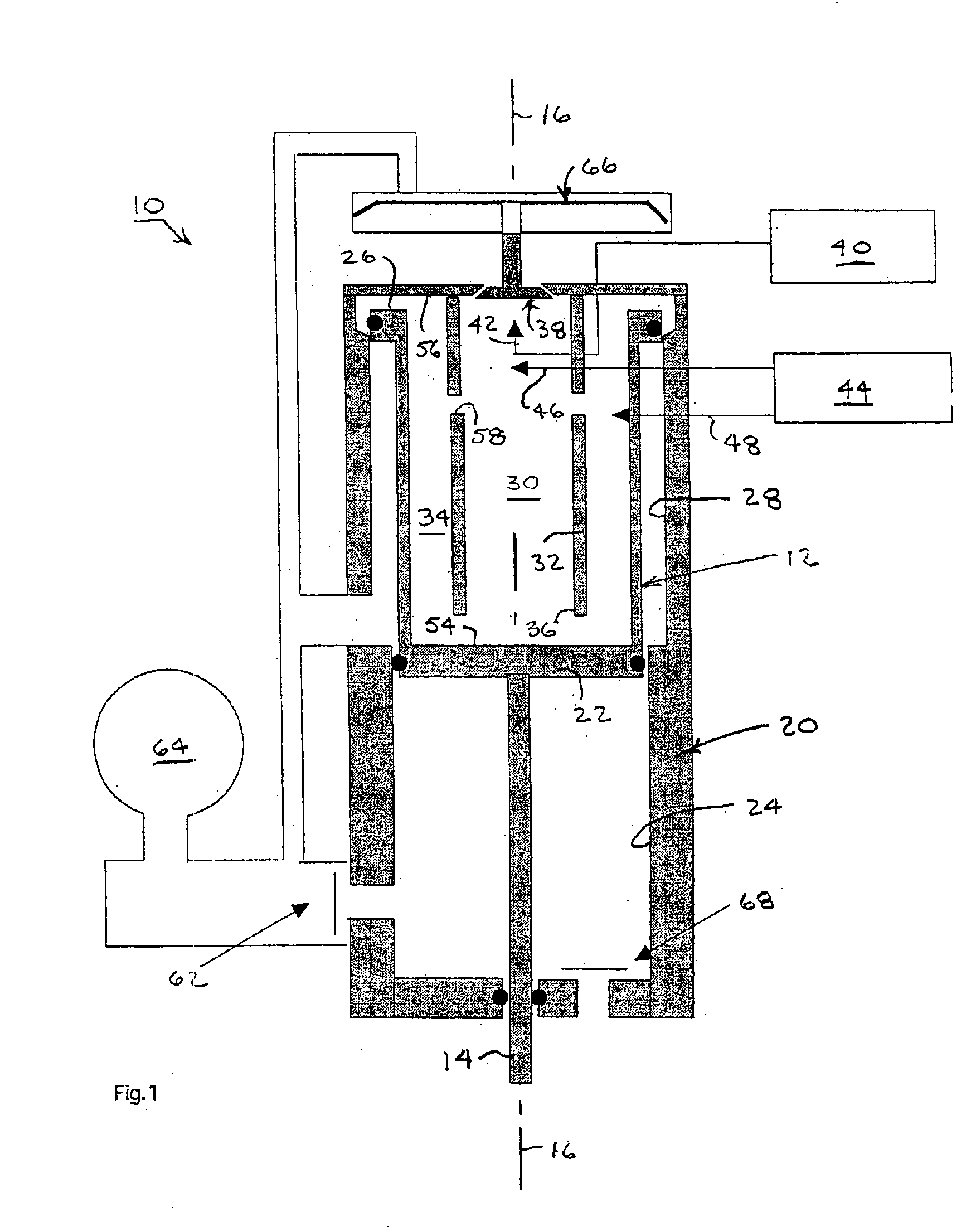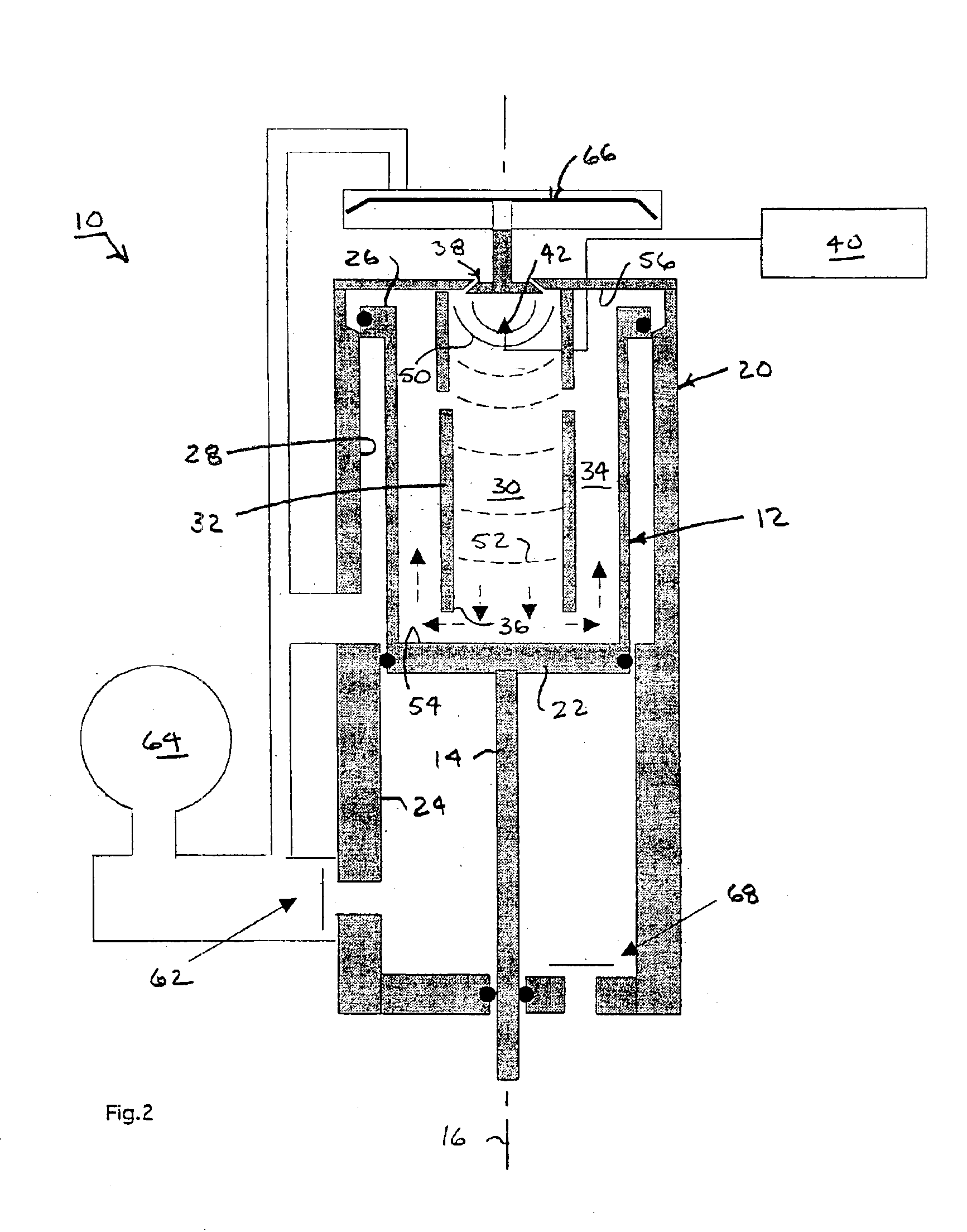Resonant combustion chamber and recycler for linear motors
a linear motor and recycler technology, applied in the direction of machines/engines, manufacturing tools, nailing tools, etc., can solve the problems of reducing scavenging efficiency, slow cycle times, and pre-combustion chambers can present problems, and achieve the effect of enhancing the free flow of scavenging air through both combustion chambers
- Summary
- Abstract
- Description
- Claims
- Application Information
AI Technical Summary
Benefits of technology
Problems solved by technology
Method used
Image
Examples
Embodiment Construction
An exemplary spark-ignition combustion-powered linear motor 10 for a portable power tool is shown in progressive stages of operation throughout FIGS. 1-10. The motor 10 has a dual piston actuator 12 with a rod 14 for communicating the power to the portable tool (not shown). The piston actuator 12 is guided along a reference axis 16 within a cylinder housing 20. An inner concentric section 22 of the dual piston actuator 12 is guided within a central bore 24 of the cylinder housing 20, and an outer concentric section 26 of the dual piston actuator 12 is guided within a peripheral annular bore 28 of the cylinder housing 20.
A primary combustion chamber 30 occupies a cylindrical space within an open-ended tube 32. A secondary combustion chamber 34 occupies an annular space surrounding the open-ended tube 32. The primary and secondary combustion chambers 30 and 34 are arranged concentrically about the reference axis 16. An unrestricted opening 36 formed at one end of the open-ended tube 3...
PUM
 Login to View More
Login to View More Abstract
Description
Claims
Application Information
 Login to View More
Login to View More - R&D
- Intellectual Property
- Life Sciences
- Materials
- Tech Scout
- Unparalleled Data Quality
- Higher Quality Content
- 60% Fewer Hallucinations
Browse by: Latest US Patents, China's latest patents, Technical Efficacy Thesaurus, Application Domain, Technology Topic, Popular Technical Reports.
© 2025 PatSnap. All rights reserved.Legal|Privacy policy|Modern Slavery Act Transparency Statement|Sitemap|About US| Contact US: help@patsnap.com



